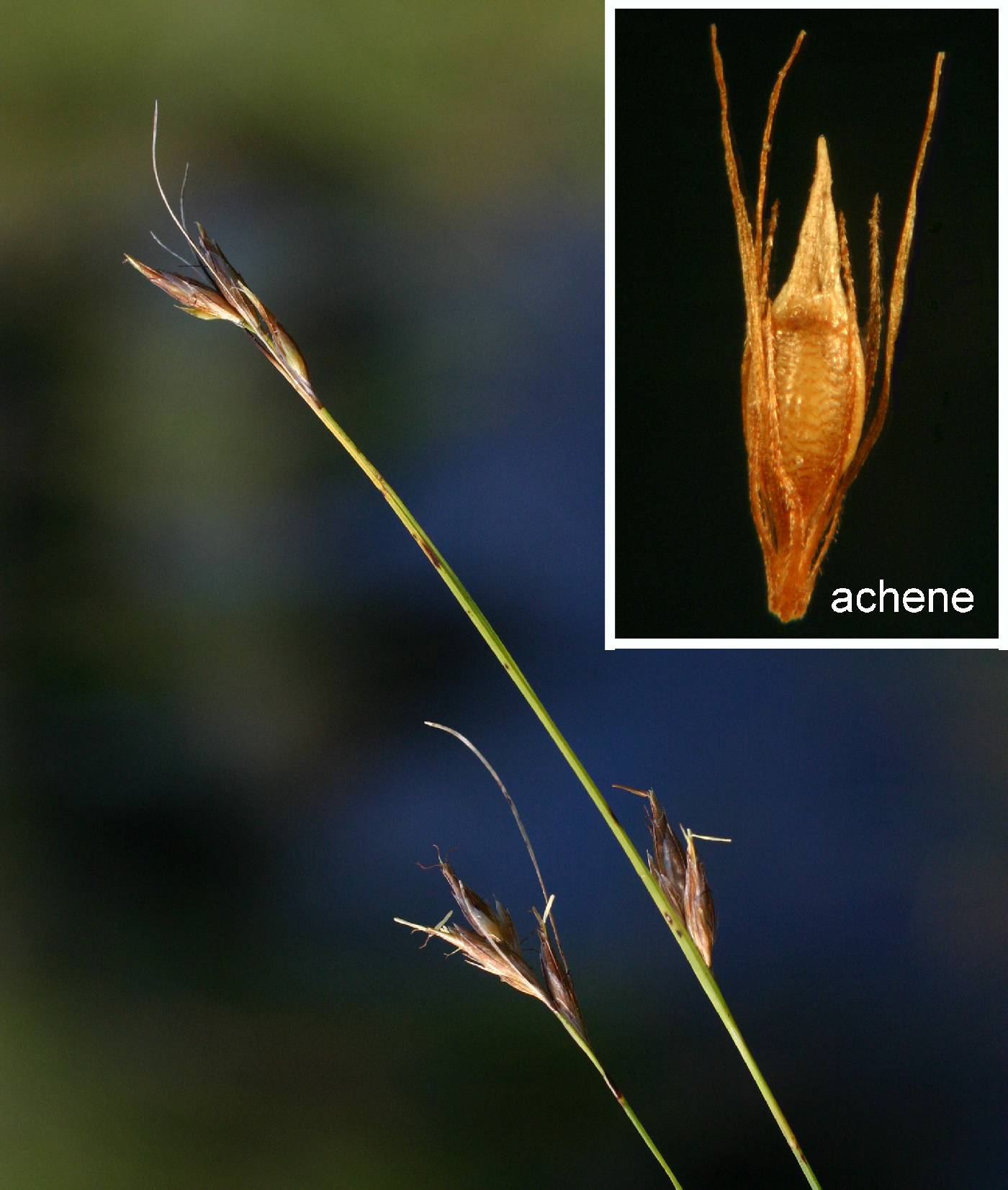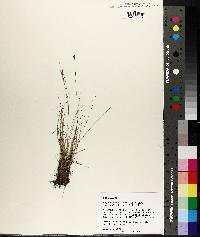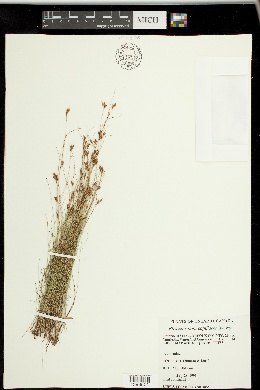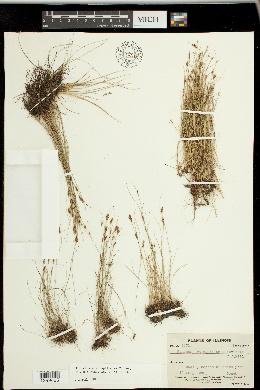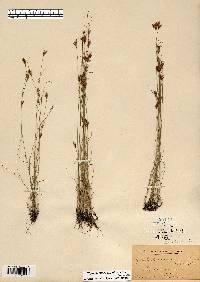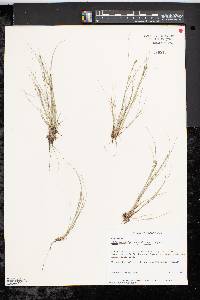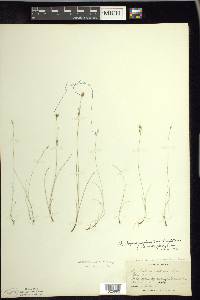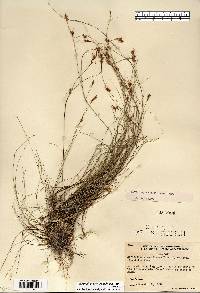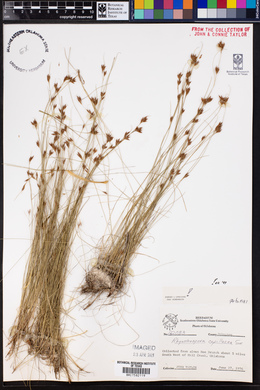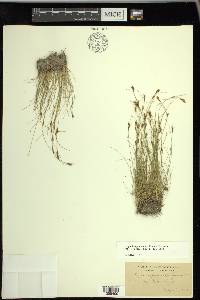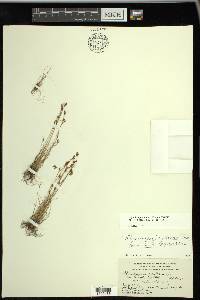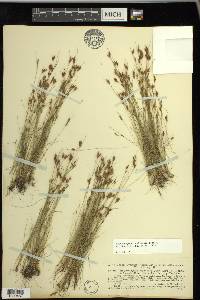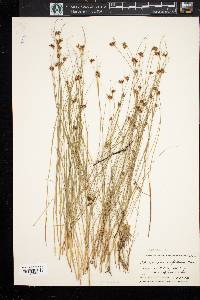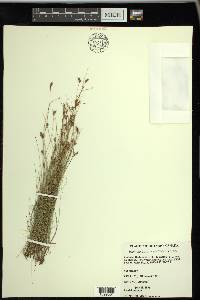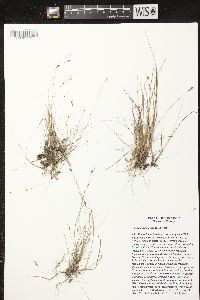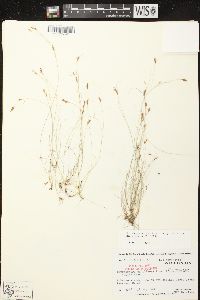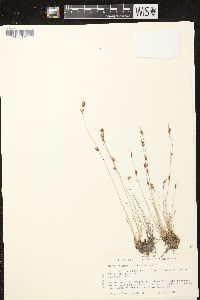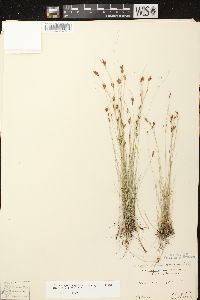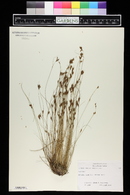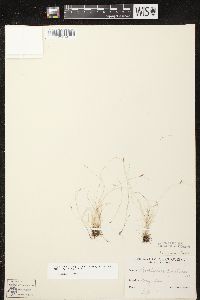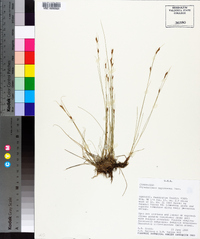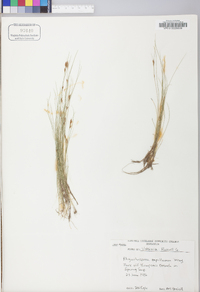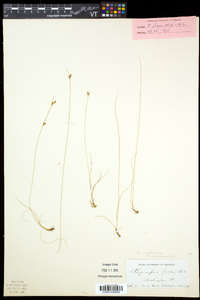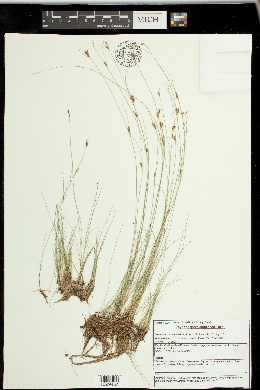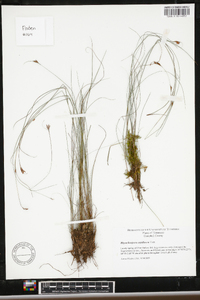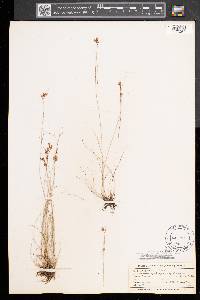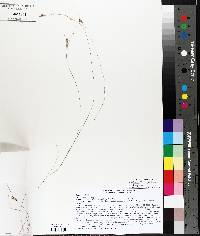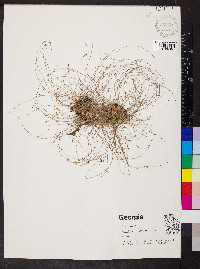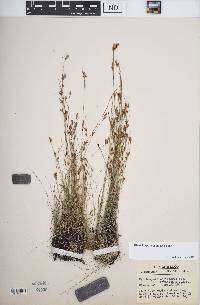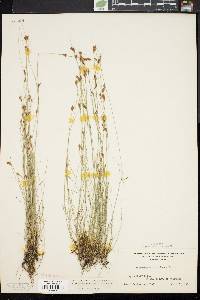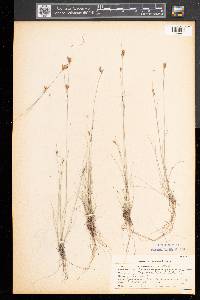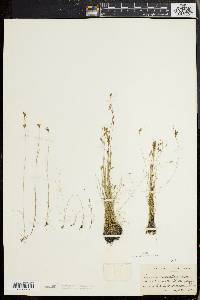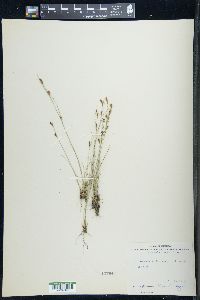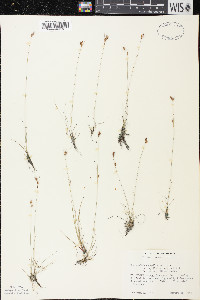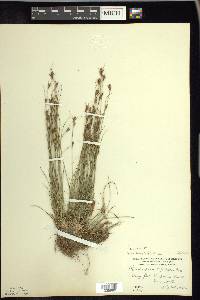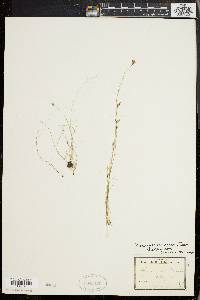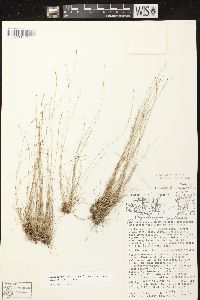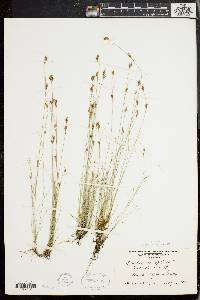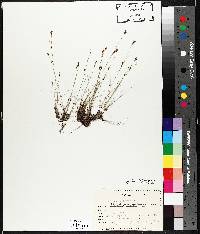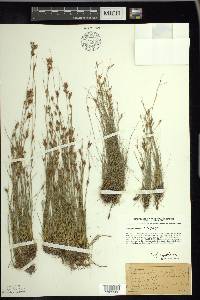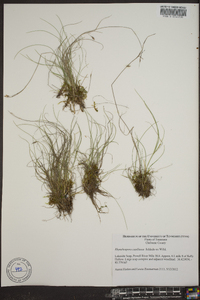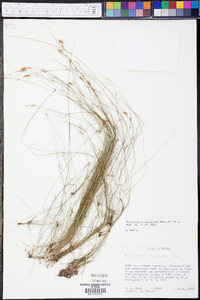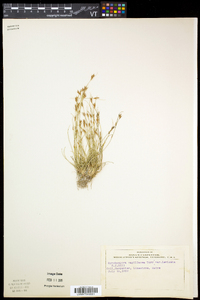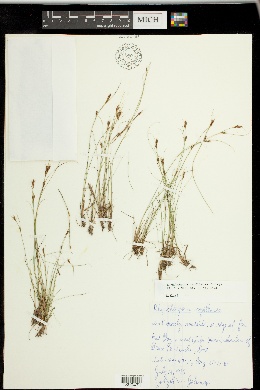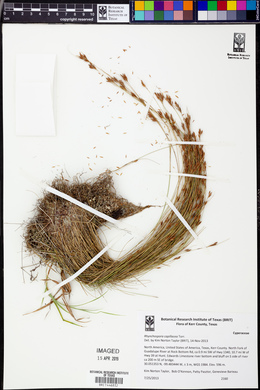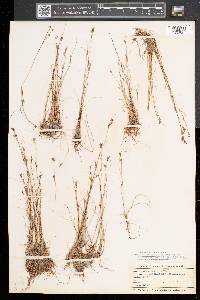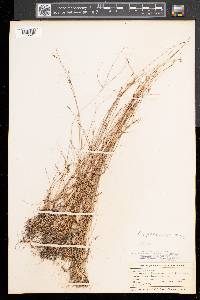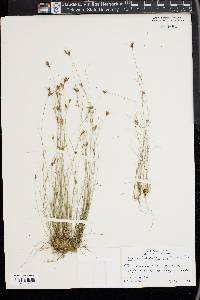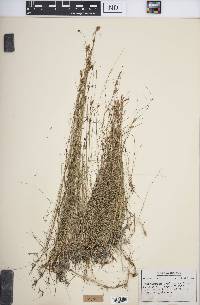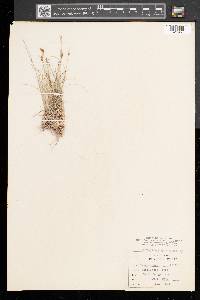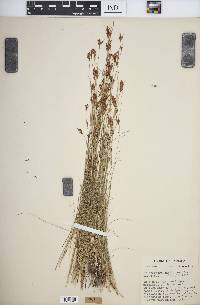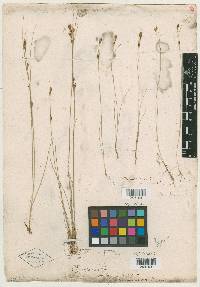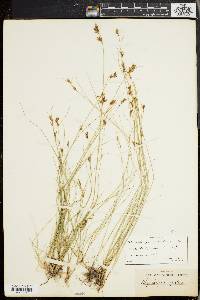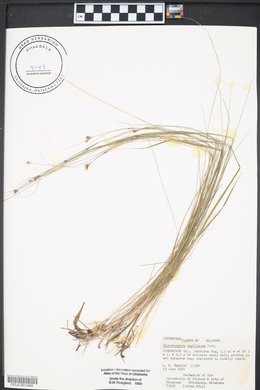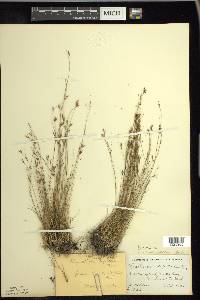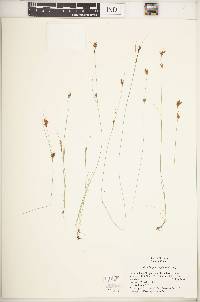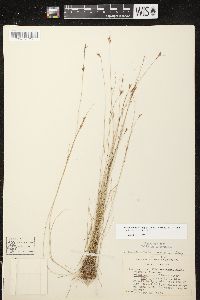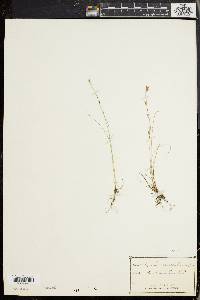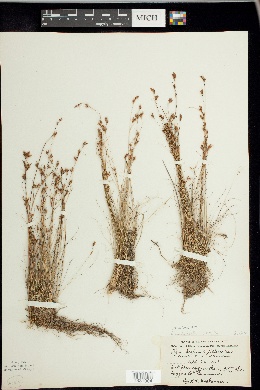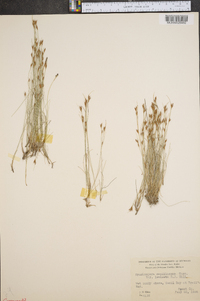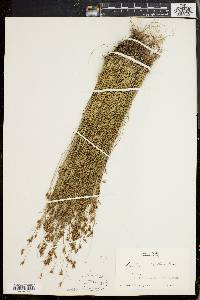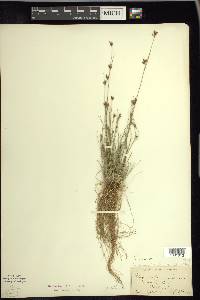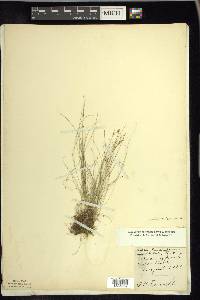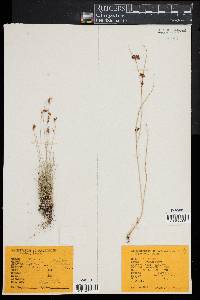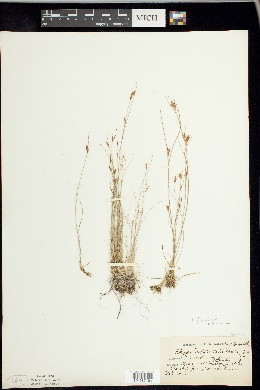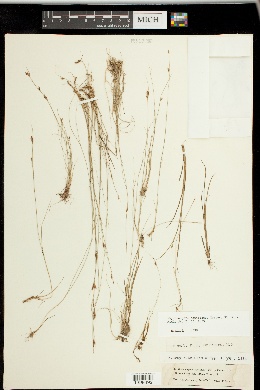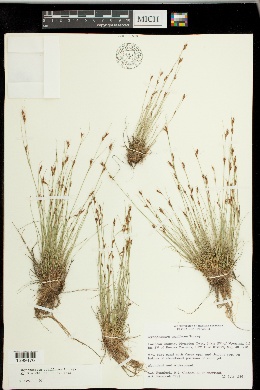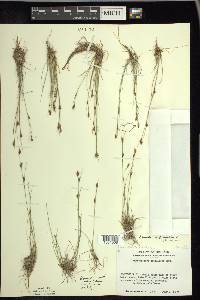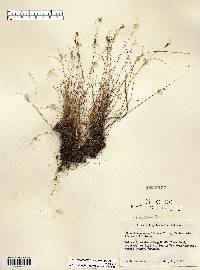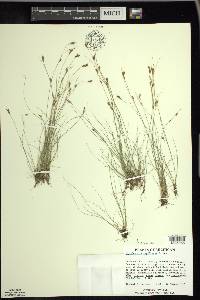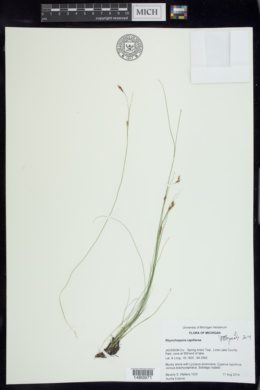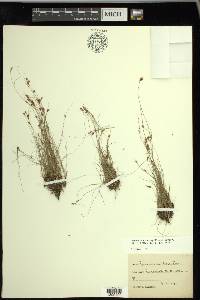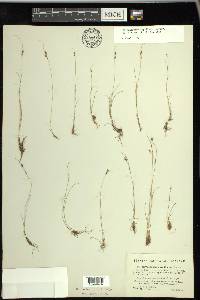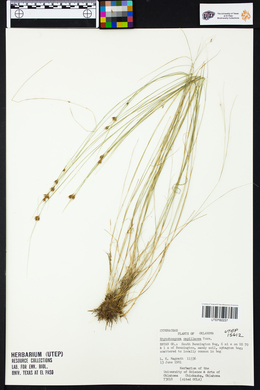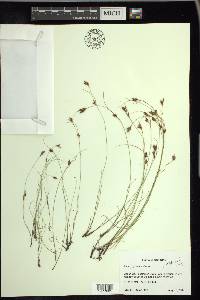Rhynchospora capillacea
|
|
|
|
Family: Cyperaceae
Needle Beak Sedge, more...needle beaksedge, horned beakrush
[Rhynchospora capillacea f. leviseta (E.J.Hill ex A.Gray) Fernald] |
Plants perennial, cespitose, 10-40 cm, wiry; rhizomes stoloniferous, slender, to 1.5 mm thick. Culms erect or curved, leafy, filiform, angularly few ribbed. Leaves ascending-excurved, overtopped by culm; blades filiform, involute, apex setaceous. Inflorescences: spikelet clusters 1-2(-3), often sparse, ellipsoid or narrowly turbinate, less than 1 cm wide; subtending foliaceous bracts exceeding compounds. Spikelets erect or ascending, pale red brown to brown, fusiform, 6-7 mm; fertile scales elliptic, 4 mm, apex rounded or acute, midrib short excurrent or not. Flowers: perianth bristles 6, overtopping tubercle base, mostly retrorsely barbellate, sometimes smooth [forma laeviseta (E. J. Hill) Fernald]. Fruits 1-4(-5) per spikelet, 2.5-3 mm; body pale brown, slender stipitate, ellipsoid, lenticular, 1.5-2 × 0.8-1 mm; surfaces longitudinally minutely striate, obscurely transversely low rugose, dotted; tubercle narrowly triangular subulate, flattened, 0.8-1.7 mm. Fruiting summer-fall. Moist to wet calcareous fens, seeps over limestones or calcareous rock, marsh meadows; 0-1000 m; Alta., Man., N.B., Nfld. and Labr., Ont., Que., Sask.; Ala., Ark., Conn., Ill., Ind., Iowa, Maine, Mass., Mich., Minn., Mo., N.H., N.J., N.Y., N.Dak., Ohio, Okla., Pa., R.I., S.Dak., Tenn., Tex., Vt., Va., Wis. The two beakrushes most commonly occurring in fens are Rhynchospora capillacea and R. capitellata.
Perennial herb with slender rhizomes, tufted 10 - 40 cm tall Leaves: alternate, three-ranked, ascending-curved, under 0.5 mm wide, thread-like with a bristly tip, parallel-veined, rolled inward marginally, with a sheathing base that encloses the stem. Sheaths opening at the top. Inflorescence: a terminal head of one or two spikelet clusters, under 1 cm wide, reverse cone-shaped or ellipsoid, subtended by leaf-like bracts. Bracts surpassing the inflorescence. Flowers: minute, subtended by a floral scale, lacking sepals and petals, bearing six bristles. Bristles surpassing achene. Stamens exserted. Pistil one. Style two-cleft. Fruit: a one-seeded achene, one to four per spikelet, thin-stalked, light brown with obscure lines, darker marginally, 1.5 - 2 mm long (not including tubercle), about 1 mm wide, ellipsoid with a narrowed base, biconvex, minutely streaked longitudinally, obscurely wrinkled, dotted. Tubercle to almost 2 mm long, thinly triangular, flattened. Culm: curved or upright, 10 - 40 cm long, very thin, wiry, overtopping leaves, angularly ribbed, solid, leafy. Spikelets: ascending or upright, brown to light reddish brown, 6 - 7 mm long, spindle-shaped. Floral scales spirally arranged and overlapping, to 4 mm long, elliptic with a rounded or pointed apex. Similar species: No information at this time. Flowering: late May to late August Habitat and ecology: Characteristically found in very springy calcareous seepage banks. It is also found near Lake Michigan on the moist calcareous shores of interdunal ponds. Occurence in the Chicago region: native Etymology: Rhynchospora comes from the Greek words rhynchus, meaning beak, and spora, meaning seed, referring to the beaked achene. Capillacea means hair-like. Author: The Morton Arboretum Cespitose; lvs involute, filiform, 0.2-0.4 mm wide; glomerules 1 or commonly 2, the terminal ovoid or oblong, with 2-10 erect or ascending spikelets, the lateral remote, subsessile, with 1-4 spikelets; bristles 6, retrorsely barbellate or seldom smooth, surpassing the achene; achenes elliptic- oblong to narrowly elliptic-obovate, 1.7-2.1 mm, scarcely (or less than) half as wide, conspicuously narrowed toward the base, pale (and often obscurely darker-lined) centrally, darker toward the margins; tubercle subulate- attenuate, 0.8-1.6 mm; 2n=26. Calcareous swamps, bogs, and shores; Nf. to Sask., s. to Va., Tenn., and Mo. Gleason, Henry A. & Cronquist, Arthur J. 1991. Manual of vascular plants of northeastern United States and adjacent Canada. lxxv + 910 pp. ©The New York Botanical Garden. All rights reserved. Used by permission. From Flora of Indiana (1940) by Charles C. Deam Local in marly, springy places in the lake area, usually associated with the preceding species [Rhynchospora alba] and with Scleria verticillata. …… Indiana Coefficient of Conservatism: C = 10 Wetland Indicator Status: OBL |

